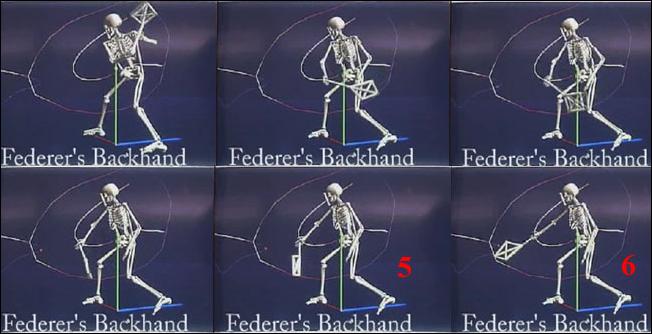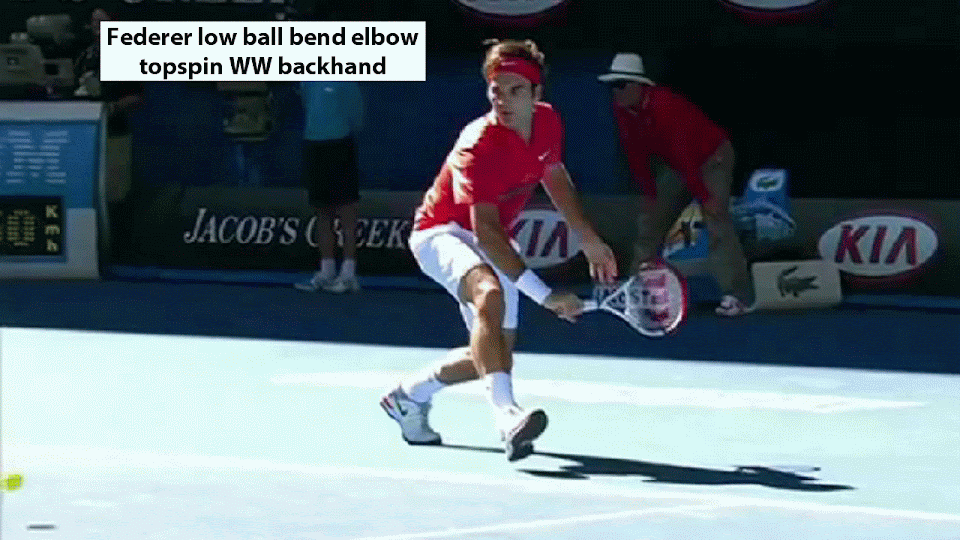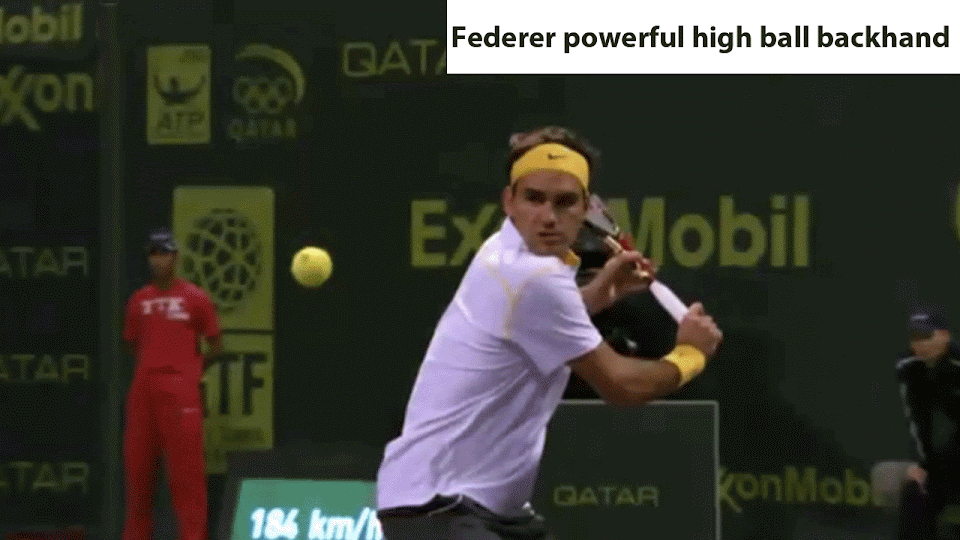Chas Tennis
G.O.A.T.
One Hand Backhand - What Force to Start Forward Swing?
I have just been watching great one-hand backhands at the Madrid Open. Including excellent slow motion that can be replayed in even slower motion or single frame with my DVR.
Often when I try to swing forward for a one hand backhand the stroke is very weak in the initial acceleration, especially if I'm rushed. The ball contact is extremely late on heavy pace and often the ball goes off at an angle and into the ground.
On very rare occasions in the past, when I was hitting better pace 1HBHs, if I had a set up on the backhand side and ran forward for the ball I could hit a monster TP backhand with confidence. Not for some years now....... So I know that heavy pace backhands are possible. I am wondering where that stroke came from. ?
This question deals with only that time when the one hand backhand backswing is just completed and the the racket is starting to accelerate.
Biomechanical issues -
1) Shoulders orientation, back at about 45°(?) to the baseline, etc., and also the angle of the arm to the shoulder to start the forward swing- the upper arm is out from the body. Why are these angles used and their purpose in accelerating the upper arm?
2) Why does the racket go back to well above the head? Why is the first part of the stroke downward?
3) Does the lat work on the upper arm. How? Is that why the upper arm is always raised out from the body in high level backhands - so that it can shorten and move the upper arm?
4) Effect of body turning to initially propel the shoulder & arm forward. ?
5) Which muscles contribute to downward & forward arm & racket motion? Which contribute to racket head speed and in what degree: lat, rear delt, others? The racket and arm seem to accelerate strongly downward at first picking up speed and then swing to a more forward direction for impact.
6) How is the stretch-shortening cycle at work in the 1hbh? Especially for the initial upper arm motion.
For illustrations, see the one hand backhands at end of the take back and ready for the forward swing.
https://www.google.com/search?q=ill...8EJj54APhh4CgBQ&ved=0CEsQsAQ&biw=1334&bih=702
Some especially good illustrations of just before the forward swing are on tennis.about.com , strokes #5,6,7.
http://tennis.about.com/od/playersm...e-pro-one-handed-topspin-backhand-grips_6.htm
Slow motion videos on the 1HBH including frames showing the start of the one hand backhand. Racket high, player looking over shoulder, shoulders turned past perpendicular to the baseline, second hand still on racket - the initial position. What are the details of how the racket accelerates from there?
Roger Federer and Justine Henin Topspin backhands
YOUTUBE ACCOUNT CLOSED
Roger Federer backhands shot with slow motion
Roger Federer's topspin backhand 360 degree breakdown 2.0
Federer Wawrinka and more Top spin BH part I: The preparation
Federer, Wawrinka and more top spin BH part II: The Stroke phase
Richard Gasquet - Slow Motion Top Spin Backhands in HD
http://www.youtube.com/watch?v=YuBRallEByc
I have just been watching great one-hand backhands at the Madrid Open. Including excellent slow motion that can be replayed in even slower motion or single frame with my DVR.
Often when I try to swing forward for a one hand backhand the stroke is very weak in the initial acceleration, especially if I'm rushed. The ball contact is extremely late on heavy pace and often the ball goes off at an angle and into the ground.
On very rare occasions in the past, when I was hitting better pace 1HBHs, if I had a set up on the backhand side and ran forward for the ball I could hit a monster TP backhand with confidence. Not for some years now....... So I know that heavy pace backhands are possible. I am wondering where that stroke came from. ?
This question deals with only that time when the one hand backhand backswing is just completed and the the racket is starting to accelerate.
Biomechanical issues -
1) Shoulders orientation, back at about 45°(?) to the baseline, etc., and also the angle of the arm to the shoulder to start the forward swing- the upper arm is out from the body. Why are these angles used and their purpose in accelerating the upper arm?
2) Why does the racket go back to well above the head? Why is the first part of the stroke downward?
3) Does the lat work on the upper arm. How? Is that why the upper arm is always raised out from the body in high level backhands - so that it can shorten and move the upper arm?
4) Effect of body turning to initially propel the shoulder & arm forward. ?
5) Which muscles contribute to downward & forward arm & racket motion? Which contribute to racket head speed and in what degree: lat, rear delt, others? The racket and arm seem to accelerate strongly downward at first picking up speed and then swing to a more forward direction for impact.
6) How is the stretch-shortening cycle at work in the 1hbh? Especially for the initial upper arm motion.
For illustrations, see the one hand backhands at end of the take back and ready for the forward swing.
https://www.google.com/search?q=ill...8EJj54APhh4CgBQ&ved=0CEsQsAQ&biw=1334&bih=702
Some especially good illustrations of just before the forward swing are on tennis.about.com , strokes #5,6,7.
http://tennis.about.com/od/playersm...e-pro-one-handed-topspin-backhand-grips_6.htm
Slow motion videos on the 1HBH including frames showing the start of the one hand backhand. Racket high, player looking over shoulder, shoulders turned past perpendicular to the baseline, second hand still on racket - the initial position. What are the details of how the racket accelerates from there?
Roger Federer and Justine Henin Topspin backhands
Roger Federer backhands shot with slow motion
Roger Federer's topspin backhand 360 degree breakdown 2.0
Federer Wawrinka and more Top spin BH part I: The preparation
Federer, Wawrinka and more top spin BH part II: The Stroke phase
Richard Gasquet - Slow Motion Top Spin Backhands in HD
http://www.youtube.com/watch?v=YuBRallEByc
Last edited:






